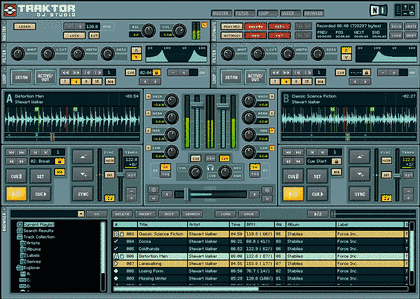SLS International today announced that PMC Sound, located in the Branson Mo. area, has just purchased the first SLS, RLA/2 Ribbon Line Array system for their touring operations throughout the Midwest. This is the first RLA/2 system purchased for the touring industry as it was just released unannounced at the Audio Engineering Society’s annual convention last month in Los Angeles.
The RLA/2 is a highly compact, high-output line array system utilizing the acclaimed SLS, PRD1000 New Technology Ribbon Driver. Each module of the RLA/2 weighs only 56 pounds but can produce an astonishing 126db continuous output. When multiple modules are coupled in a line array configuration, very long throw high output can be achieved. This system is less than one quarter of the size and weight of any comparable conventional system on the road today.
PMC purchased (24) RLA/2modules and (8) SLS, T2184K, 4000 thousand-watt dual 18-inch subwoofers, to deliver the ground-shaking bass that will accompany the RLA/2’s full-range smooth and accurate delivery of sound.
Steve Dubois, director of rental operations for PMC and past sound engineer for Tina Turner, Prince and Andy Williams, to name a few, commented: “When I first heard the RLA/2 prototype system in the SLS engineering laboratory I was blown away. I only heard three modules playing and the midrange and high-frequency detail was better than any system I have ever used in my 20-plus years on the road. All of the growl and tone of high-output electric guitar recordings were right there. Most compression driver systems add so much coloration and distortion that the real sound the musician works so hard to achieve is turned into mush. The SLS ribbons are so open and transparent that they don’t change the musicians’ sound at all. We’ve been in the market for a new system but most of the new boxes out today are pretty much the same old thing with a new paintjob. The SLS Ribbon Line Array’s are an incredible breakthrough for the touring industry. They are very compact and quick to set up. Our new system will take up less than half of the truck space that we were expecting to need for our new rig. And because each module only weighs about 50 pounds it won’t be necessary to have the rigging requirements and the labor cost will be a lot less. I can’t wait to start using the new system.”
PMC Sound has also sold the first RLA/2 system for an installation. Garth Showalter, division manager for PMC, sold an 8 module system for immediate installation in San Angelo, TX. Showalter stated: “The wide horizontal coverage and even vertical dispersion of the RLA/2 allowed me to design a system that will easily cover the entire church with just a single line of 8 modules hung in the center of the room above the platform. I relied on the SLS, LASS (line array simulator software) program to help with my design and it verified we will attain less than a 3db variance in every seat in the main sanctuary. I was able to do this without additional delay speakers and extra electronics and labor for the job. With the RLA/2 install, the people in the back row will hear the same thing and at the same level as the people in the front row. I think this will be one of our best system installs ever and we have been installing systems in the Midwest for over 10 years now using what the industry considered the best speakers for installation available.” Showalter also added: “It will be great to have our touring speakers be the same brand as our installation brand. We will be able to go out and do real-world demonstrations for our customers with speakers they will be getting and not rely on selling with promises of what they will hear if they go with us. Many of the touring speakers on the market today are not that well-suited for installations like the SLS’s. With SLS’s technology and the variety of cabinets that they offer, it will give us a great advantage when competing for the jobs.”
John Gott, President of SLS International stated: “We are very pleased that PMC chose the RLA/2 system for their rental department. I know they have been looking at many of the industry giants’ systems and for them to choose us confirms that we are doing the right thing. We just demonstrated the RLA/2 at the AES show last month and along with the PMC order we have had many inquires as to the delivery of these new compact systems. We are presently cranking up the production on this model as we feel it will be one of our best sellers. With the addition of the RLA/2 to our product line this gives us a complete compliment of line array products. Our RLA/1 large format system and our LS8695 Line Array Column are gaining incredible popularity in the industry. With the industry pushing full bore into the line array arena it’s great to know that we now have a model for all applications. And, because we are the only company to offer a system with a real line array component (a ribbon driver) and every one else is trying to simulate it with old technology, we definitely have a big advantage over our competition.”
About SLS International, Inc.
Based in Springfield, Mo., SLS International, Inc. (OTCBB: SITI), is a 28-year-old manufacturer and developer of new patent-pending ultra-high fidelity ribbon driver loudspeakers and sound systems for the commercial, home entertainment, professional and music markets. SLS has perfected the ribbon-driver technology enabling their loudspeakers to achieve exceptional inner detail and accuracy with 20 to 30 percent less the distortion of typical compression driver and dome tweeters. SLS speakers and systems are used in high-profile venues such as NBC/MSNBC’s 2002 Olympics studios in Salt Lake City
For more information, visit the SLS Web site.
